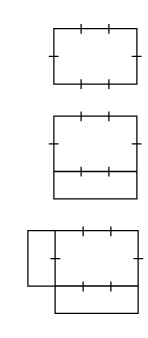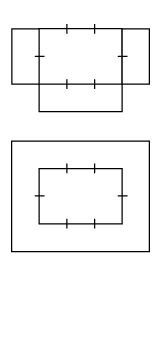The method used to describe the plan of a traditional
temple or shrine building. It included the number of lengthwise bays *ken
間 in the core *moya 母屋, plus
the number of bays (usually 1-bay deep) in the aisles *hisashi
廂. Thus, a moya that is three bays lengthwise and is surrounded by hisashi
on four sides would be stated as three bays, four sides; sanken yonmen
三間四面. If this moya is two bays deep, a modern description states only the
exterior dimensions which in this case would be a 5x4 bays. The lengthwise number
of bays precedes the transverse number. The traditional method does not give the
dimensions of a building clearly because the width of bays can vary greatly. The
kenmenkihou method is limited because it does not include depth when describing
a floor plan. Also, should an additional bay *magobisashi
孫廂 be added to the front hisashi, there would be no way to indicate this using
the kenmenkihou method because the added bay is outside the moya
and hisashi. It is thought that this method of describing a floor plan became
standard in the Heian period, when a regulation prescribed that the moya be two bays deep. With the introduction of western architecture in
the late 19c, the kenmenkihou method could not be applied to reinforced
concrete buildings. For repair or reconstruction of traditional timber buildings
the old method of describing the number of bays was gradually replaced by the
metric system. Table of linear measurement equivalents.
|


